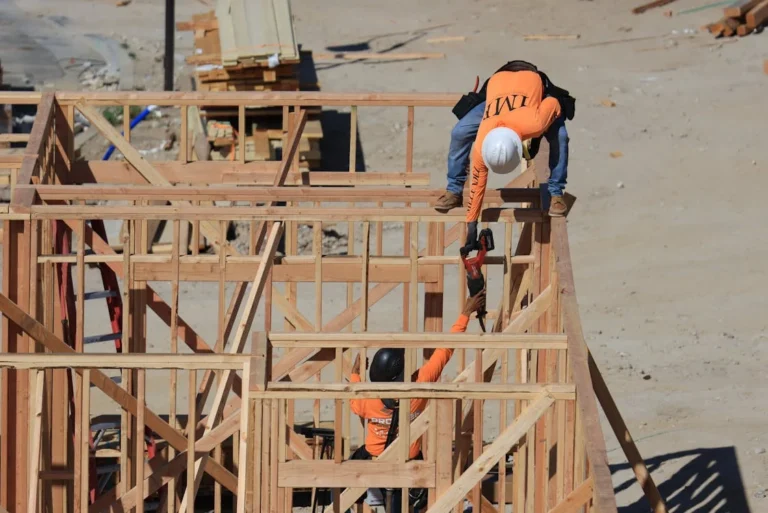The advent of Building Information Modeling (BIM) revolutionises the construction industry, primarily through improving project delivery. This powerful digital tool has proven effective in driving project efficiencies, fostering collaboration, and enhancing construction quality. This blog will delve into how professionals can leverage BIM to ensure successful project delivery.
Firstly, BIM bolsters the design phase of construction projects. A dynamic, 3D model-based process, BIM offers construction teams the chance to visualise project designs more effectively than traditional 2D methods. By bringing the concept to life, BIM eliminates design ambiguities and reduces the likelihood of errors during construction. Architects, engineers, and construction professionals can test different scenarios, choose the most efficient, and create more accurate project estimates. Consequently, BIM significantly mitigates project risks and helps to deliver projects within the budget and time constraints.

BIM also enhances coordination and collaboration between stakeholders. Traditional construction methodologies often create information silos, which can lead to miscommunication and inefficiency. With BIM, we can maintain a centralised, shared model accessible by all project stakeholders. This shared model can store and display complex data, from design details to cost estimates. As a result, all parties can stay informed about project details, changes, and progress, facilitating seamless coordination and collaboration.
For the construction phase, BIM propels efficiency and precision. With detailed and accurate 3D models, construction teams can visualise the building process, predicting and solving potential issues before breaking ground. For instance, BIM can identify clashes between different elements such as piping and electrical conduits, allowing these to be resolved before actual construction. Furthermore, with BIM, we can perform ‘4D simulations’ that link the 3D components of a design to the construction schedule. This feature allows managers to plan construction sequences better, optimise resource allocation, and track project progress against timelines, thus ensuring on-time project delivery.
From a sustainability perspective, BIM promotes greener building practices. Designers can use BIM to simulate different energy efficiency scenarios, water use strategies, and waste management plans. This capability helps teams identify and implement the most sustainable solutions, meeting the growing demand for environmentally-friendly buildings. Additionally, BIM encourages the use of prefabrication, reducing waste production on site, and thus further contributing to sustainable construction practices.
BIM’s power extends beyond the construction phase. It is instrumental during the building’s lifecycle management. Through BIM, stakeholders can gain an accurate understanding of the building’s long-term maintenance needs. By storing all necessary building information (including materials used, their lifespan, maintenance cycles), BIM allows for effective planning of maintenance activities, prolonging the building’s life and ensuring optimal functionality.
However, to fully reap the benefits of BIM, construction firms need to invest in necessary training and change management processes. BIM requires new skills and a different mindset compared to traditional construction methods. Therefore, organisations must ensure that their teams are adequately trained to handle BIM tools, and they embrace this new approach.
BIM also demands standardisation and interoperability of data. Different stakeholders need to input data consistently and in formats that BIM tools can read and manipulate. Firms, therefore, need to develop standard operating procedures for data input and management. Similarly, ensuring the interoperability of various BIM tools used by different stakeholders is crucial for smooth project execution.
As with any digital tool, BIM introduces new cybersecurity risks. With sensitive project data stored and shared digitally, firms need to prioritise cybersecurity, ensuring the protection of their intellectual property and maintaining client trust.
BIM’s role in cost management cannot be overstated. During the design phase, BIM enables professionals to carry out cost estimations with high precision. By accounting for the exact quantities and costs of materials, labour, and machinery, it helps prevent cost overruns. Simultaneously, the possibility to visualise the finished project in great detail before starting construction aids in attracting investors and securing necessary funding.
Additionally, BIM reduces rework during the construction phase. Traditional construction processes often suffer from reworks due to design errors or omissions. Such reworks inflate costs and delay project delivery. However, by providing a detailed 3D visualisation of the entire project, BIM ensures everyone understands the design, thus reducing the likelihood of errors and associated reworks.
Importantly, BIM also supports risk management. The construction industry often faces various risks, ranging from safety hazards to financial risks. BIM can identify potential safety issues in design and construction sequences, allowing for their mitigation before starting the actual construction. This capability reduces accidents on site and helps ensure compliance with safety regulations.
BIM’s value extends to the post-construction phase as well, particularly in facilities management. BIM models provide a comprehensive database of the building’s features and systems. This information enables facility managers to plan maintenance activities accurately, enhancing the building’s performance, extending its lifespan, and saving costs in the long run.
Moreover, BIM encourages innovation in the construction industry. Through the simulation capabilities of BIM, architects and engineers can experiment with different designs, materials, and construction techniques. This experimentation fosters innovation, leading to the construction of buildings that are not only aesthetically pleasing but also efficient and sustainable.

Finally, the adoption of BIM can enhance a firm’s reputation in the market. Clients, investors, and regulators increasingly recognize and value the benefits of BIM. Therefore, firms that adopt and effectively use BIM can position themselves as industry leaders, attracting more business and gaining competitive advantage.
One of the significant challenges in construction projects is handling changes in design or scope. These changes can disrupt the schedule, inflate costs, and cause miscommunication among teams. BIM shines brightly in this regard. It enables efficient management of changes, ensuring that all stakeholders promptly understand and implement alterations. The result is a more agile project delivery mechanism, better prepared to adapt to inevitable changes.
BIM also holds significant promise for integrating emerging technologies in construction. As we move forward, construction projects are expected to leverage technologies such as Artificial Intelligence (AI), Augmented Reality (AR), Virtual Reality (VR), and Internet of Things (IoT). BIM is not only compatible with these technologies but also amplifies their benefits. For example, coupling BIM with AR/VR allows for immersive visualisation of construction projects. Similarly, integrating BIM with AI can automate many construction planning and management tasks, leading to significant efficiency gains.
Looking at the broader socio-economic impact, BIM has a substantial role in the creation of smart cities. The detailed and accurate data BIM provides about buildings and infrastructure can feed into the data-driven management of smart cities. Therefore, construction firms adopting BIM can contribute to the development of smarter and more sustainable urban habitats.
However, the adoption of BIM also poses challenges. As the complexity of BIM projects increases, firms may need more advanced hardware and software, increasing the upfront investment required. Additionally, there might be resistance to change within organisations, with some professionals being reluctant to transition from familiar traditional methods to BIM.
To address these challenges, firms need to build a strong business case for BIM adoption, highlighting its long-term benefits. They also need to invest in change management and continuous professional development programs to ensure their teams can confidently and effectively use BIM.
BIM, with its ability to enhance project delivery in the construction industry, is no longer a luxury but a necessity. It offers the pathway to navigate the evolving landscape of the industry, marked by increasing complexity, rising client expectations, and a stronger focus on sustainability. While the transition to BIM requires effort and investment, the benefits it brings – cost efficiency, project agility, improved collaboration, and contribution to smart city development – make it a worthwhile journey. As we leverage BIM today, we’re not only ensuring successful project delivery but also shaping the future of the construction industry.
In the realm of technology-driven construction management, Wunderbuild stands out as a comprehensive solution tailored for the construction industry. It is not merely a project management software but a unified platform supporting everything from job management, timesheets, tasks, and lead management to price lists, assembly templates, and sophisticated estimations. With Wunderbuild, your team can effectively manage costs, purchase orders, variations, and interact with Gantt charts and site diaries in real-time. Its user-friendly interface ensures ease of use, promoting team-wide adoption and effective utilisation. Discover more about what Wunderbuild can offer here.




